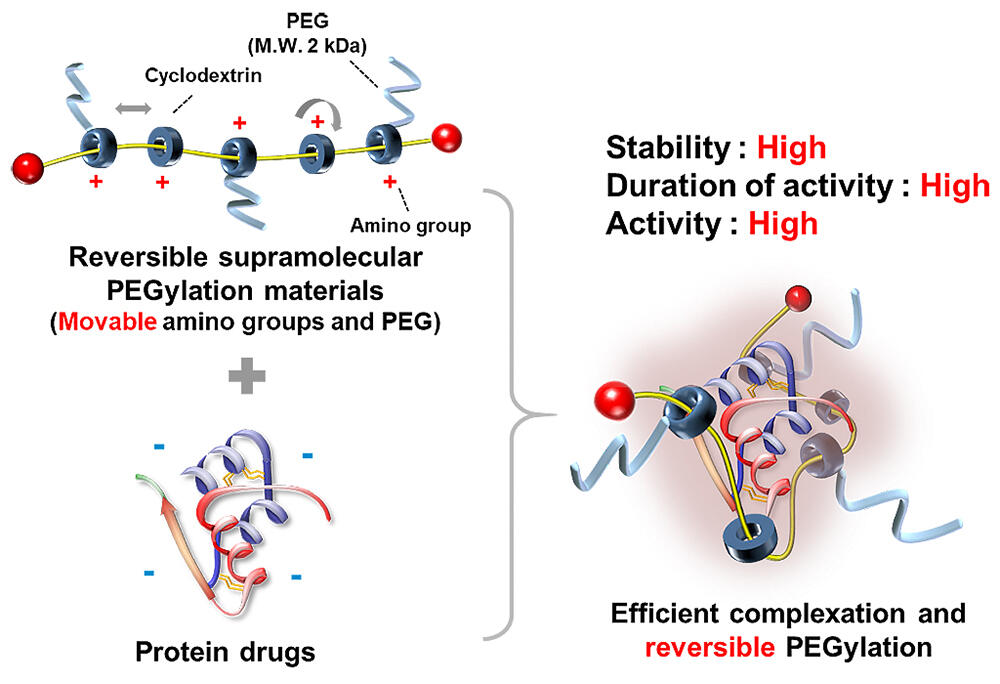A research group consisting of Associate Professor Taishi Higashi, Kumamoto University Priority Organization for Innovation and Excellence, and graduate students Kosei Utatsu and Tetsuya Kogo, Kumamoto University Graduate School of Pharmaceutical Sciences, among others, successfully developed a supramolecular material that overcomes the shortcomings of protein pharmaceuticals, such as insulin and antibodies, by simply mixing it with target compound.
As polymer drugs exhibit diverse sizes, shapes, and charge distribution, various pharmaceutical materials are used while designing a pharmaceutical product. The research group hypothesized that if a material that can recognize and deform the shape and charge distribution of a compound could be developed, it would strongly interact with any compound and improve its pharmaceutical properties. However, a flexible compound that functions adequately was needed to achieve this goal. Therefore, the group used polyrotaxane, which has been employed in past studies.
Polyrotaxane is composed of an elongated string-like molecule (PEG: polyethylene glycol), passed through multiple bead-like molecules (α-cyclodextrin), with both ends of the string-like molecule sealed-off with bulky molecules. The bead molecules in polyrotaxane can move along the string-like molecular chain. Therefore, by adding a functional group that can interact with a target protein on bead molecules in the polyrotaxane, the functional group can be presented to the protein as necessary, based on the shape and charge distribution of the protein. On constructing polyrotaxanes with amino groups (positive charges) and mixing with acidic proteins such as insulin (with negative charges), the amino groups moved to match the shape and charge distribution of insulin and formed a complex with high efficiency. In addition, aminated dextran, in which amino groups were added to a polymer called dextran, was prepared and compared with aminated polyrotaxane as a control substance in which the amino groups were fixed. Aminated polyrotaxanes formed complexes much more efficiently than aminated dextran.

Provided by Kumamoto University
On mixing the developed supramolecular material and antibodies, the aggregate formation was markedly decreased, which reduced the antibody action and improved stability. On mixing with insulin, the hypoglycemic effects were significantly sustained without any attenuation. As this supramolecular material can overcome the disadvantages of various protein pharmaceuticals by simple mixing, it can be applied as a functional and versatile pharmaceutical material. "Using the developed materials, we are building drug carriers that deliver genome-edited molecules into cells with high efficiency. In the future, we plan to apply the developed material to nanomedicine, nucleic acids, and cells, and build a versatile pharmaceutical material that is not influenced by drug species," Associate Professor Higashi said.
This article has been translated by JST with permission from The Science News Ltd.(https://sci-news.co.jp/). Unauthorized reproduction of the article and photographs is prohibited.




